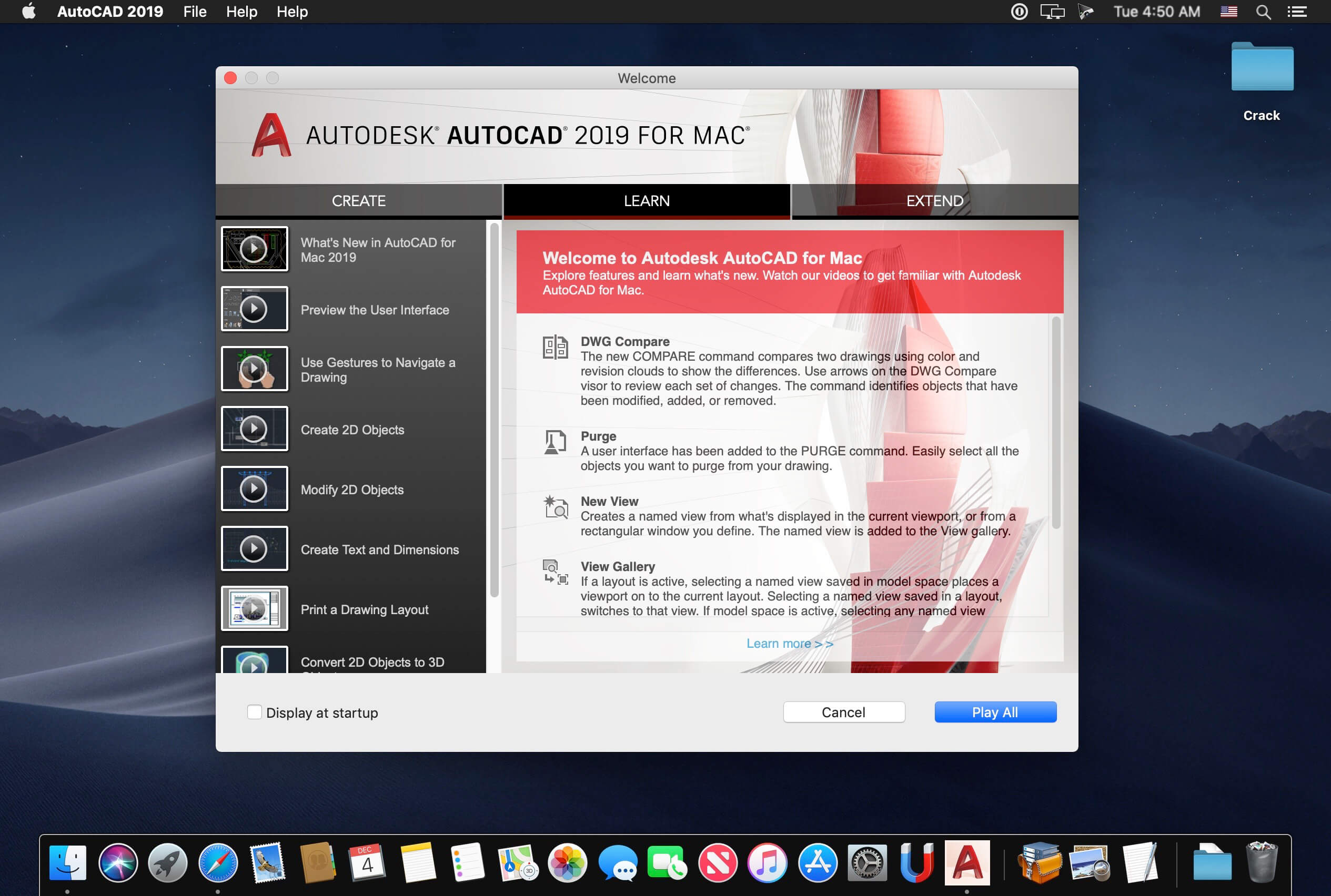

- #Autocad for mac create title of the edrawings how to
- #Autocad for mac create title of the edrawings full version
- #Autocad for mac create title of the edrawings pdf
- #Autocad for mac create title of the edrawings update
- #Autocad for mac create title of the edrawings code
You can now paste your Macro in under ‘Command string’.Ĭlick on the OK button to close the dialogue and save your Macro.įinally, click on your new button… and see what happens! To add your command Macro to the new toolbar button, right click on the ‘Run script’ tool palette button, and chose ‘Properties’. You don’t have to use the run script command for testing Macro’s, but there isn’t a ‘Run Macro’ command, so it will have to do! Drag and drop the run script command from the customize user interface dialogue onto your palette.Type ‘script’ into the search box to bring up the run script command.This will bring up the ‘Customize user interface’ dialogue. Right click over any blank area on your new palette and choose ‘Customize commands’.If you are new to working with Tool palettes, read Edwin’s post ‘ creating your own AutoCAD palette’ for more information on creating and working with tool palettes. Previous releases may be a little different. Tip: These instructions are for AutoCAD 2012. Right click over any blank area on your palette and chose ‘New Palette’ to create a new blank palette which we will use for testing our macro.
#Autocad for mac create title of the edrawings how to
You can run your Macro from the AutoCAD CUI (See Edwin’s post on creating new AutoCAD commands) however I am going to show you how to run your command from a tool palette.įirst use the keyboard combination shortcut CTRL+3 to open your tool palettes. You can read more about the Syntax for AutoCAD Macros here. This should cancel any other commands that are running before your Macro runs. The ^C^C at the beginning of the command is equivalent to pressing ‘Esc’ on the keyboard twice.
#Autocad for mac create title of the edrawings code
However, using spaces can make your code difficult to read and debug so I suggest that you replace the spaces with semi-colons. Spaces are also interpreted as hitting the return key (just like when you are operating AutoCAD manually). Note that, instead of a carriage return macros use the semi-colon to indicate where you would usually press return on your keyboard. To write the same routine as a macro, we would put it all on one line, like this:
#Autocad for mac create title of the edrawings pdf
We end up with this script to create an A1 PDF plot in our default plotting location:

In the last post, we learned how to examine what we had previously written at the command line to write a script. Tip: You can of course, get the best of both worlds by using a command Macro to call a Script… Automate your plotting – reloaded The Bad – Writing long, complicated command Macro’s can be very difficult to debug. Macros can contain pauses for user input, but be careful – there is no error handling method in a Macro. AutoCAD Command Macro’s can contain LISP code, and they can also contain DIESEL code (which is good for AutoCAD LT users). The Good – AutoCAD command Macros can be distributed via the CUI or tool palettes, making it much more intuitive for your users to use. Some internal training will be required to run your Scripts. The Bad – Loading Script files can be a fiddle, and your users will need to know where to find the Script files. This is not available to AutoCAD LT users.
#Autocad for mac create title of the edrawings full version
If you are using the full version of AutoCAD, you can use the LISP programming language within your script. AutoCAD scripts can contain comments, to remind you what the script does.
#Autocad for mac create title of the edrawings update
Should you want to update a Script file, you only need to change it in one place for everyone to get the changes. AutoCAD scripts can be stored in a central location on your server. The Good – AutoCAD scripts can contain long lists of instructions for AutoCAD to follow. All you really need to automate AutoCAD is a good understanding of the sequence of commands that you need to complete to get the job done.

I hope to demonstrate that the process of writing a Macro is the same as that of writing a Script. A Macro usually lives within your CUI or on a Tool palette.


 0 kommentar(er)
0 kommentar(er)
